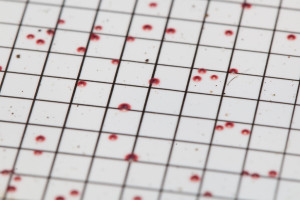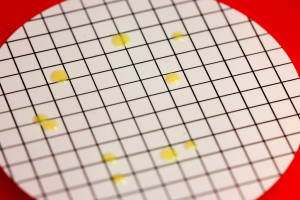Full Enterococcus Speciation via MALDI-ToF Confirmation
Aug 7, 2015
ALS Environmental is now able to offer full identification and speciation for a diverse range of microorganisms from drinking water, recreational water or any other water source or sample type. This new valuable information for your analysis is in addition to the previously enumerated counts determined as part of the microbiology analysis.
Using our MALDI-ToF confirmation technique the ALS Environmental laboratory is able to rapidly screen a sample for a range of microorganisms and determine the species present and hence identify the organisms to the genus and species.
Example number 1:

For Enterococci and Streptococci analysis we are able to enumerate a sample for this organism and report a count in colony forming units (cfu) per 100ml of sample or per swab. Now we are also able to identify the species of Enterococci or Streptococci present which may provide some guidance to the possible source of contamination. Enterococci or Streptococci isolated could be identified as follows with the possible source of contamination listed, displayed below:
These isolates could be one of or a combination of the following with the possible host source:
| Genus & Species | Contamination Source |
| Enterococcus faecalis | predominantly of human origin |
| Enterococcus faecium | predominantly of human origin |
| Streptococcus avium | predominantly of bird origin |
| Streptococcus bovis | predominantly of cows, sheep and other ruminant’s origin |
| Enterococcus equinus | predominantly of horse origin, S. equinus is seldom found in humans |
| Streptococcus mitis | predominantly of human origin, inhabits the mouth |
| Streptococcus salivarius | predominantly of human origin (mouth & upper respiratory tract) |
| Enterococcus canis | predominantly of canine origin |
Example number 2:
 For Coliforms we are able to enumerate a sample for Total coliforms and report a count in colony forming units (cfu) per 100ml of sample or per swab. Now we are able to identify the many coliform Genus and species in the environment that may be linked to a specific source.
For Coliforms we are able to enumerate a sample for Total coliforms and report a count in colony forming units (cfu) per 100ml of sample or per swab. Now we are able to identify the many coliform Genus and species in the environment that may be linked to a specific source.
These isolates could be one of or a combination of many of the following genera which comprise the Coliform group, there may be many species:
| Buttiauxella | Cedecea | Citrobacter |
| Edingella | Enterobacter | Hafnia |
| Klebsiella | Leclercia | Moelleralla |
| Pantoea | Rahnella | Raoutella |
| Serratia | Yersinia | Yokenella |
This information may be useful to determine source of contamination which may be from an animal or human source or a specific animal. It can also aid an investigation to determine if it’s a single specific species or multiple species.
How it works
We are able to utilise the latest available technology using proteomics to rapidly screen for a diverse range of microbial flora and speciate any isolates.
The technology works by examining the protein structure of the cells in the test sample. A mass spectra of the proteins is produced, which can be compared to a reference library in order to produce an identification. It has been used extensively in the clinical sector for over 5 years & ALS is the first laboratory to successfully validate the technology and gain accreditation in the environmental sector.
The testing is fully compliant with:
- UKAS ISO 17025 accreditation
- DWTS accreditation
- HSG 274 guidance
- ACoP L8 guidance
- ISO 11731 for Legionella analysis
The analysis of samples using MALDI-MS is performed in this case, using Time-of-Flight (TOF). The mass determination of molecules within the vacuum chamber is achieved by a precise measurement of the time period between the acceleration of the ions in the source, and their impact on the detector.
The desired target area of the test plate is moved into position under the laser. The laser fires for between 1-5 nano-seconds, causing vaporisation of the matrix molecules and the sample molecules embedded within them. The vaporised molecules enter a highly charged electrostatic field, where they are protonated (positively charged), causing acceleration towards the mass analyser with a kinetic energy of some KeV. After leaving the source, the ions pass a field-free drift region in which they are separated due to their m/z ratio. This occurs because at a fixed kinetic energy, ions separate with different m/z values are accelerated in the ion source at different velocities. Knowing the acceleration voltage and the precise length of the drift region, the m/z ratio can be determined by measuring the time of flight.
On the instrument, we look at a specific mass range (2000 – 16000 Daltons), where proteins are expected. The protein structure of a cell is unique to a particular species, and so a protein ‘fingerprint’ of the sample can be produced. This ‘fingerprint’ can be compared to a reference library, in order to convert a protein mass spectra to an identification.
For more details on the capabilities of our MALDI-ToF and how it can have a positive impact on your business by providing instant and informative data please speak with your Customer Service Co-ordinator or contact us on 02476 42 12 13.


